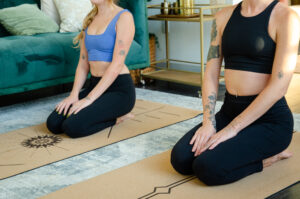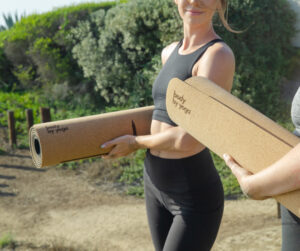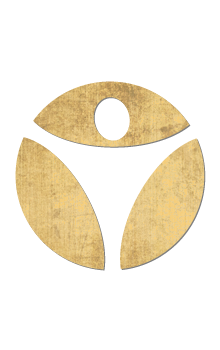Is Yoga Just Stretching?
- Updated on: August 9, 2016
You’re sitting in the stands waiting for the home team to take the field, and you see trainers crouched over athletes, stretching their legs across their bodies. Then later, you see an ad for yoga clothes, and the stretch is the same. So is yoga just a fancy name for stretching?
Not quite. Comparing yoga and stretching is like comparing apples and kumquats; they are both fruit, but that’s where the similarity ends. Yoga has five key differences that take it a little deeper than stretching.
It’s not how far you go; it’s how you go far.
Yoga isn’t just about touching your toes in a standing forward bend. Proper alignment of the bones and correct use of the muscles is emphasized in all poses. This means that while you may be able to bend over to the front and touch your toes, the larger goal is doing it safely and correctly. It doesn’t count for much if you can touch your toes but have difficulty standing back up. Proper alignment may mean bent knees for now to reach the ground, but over time you will appreciate it (like when you are 85 and still as tall as you were at 35).
Breathe: it may save your life
Another big difference between yoga and stretching is a reflex action we all take for granted: breathing. Yoga stresses breath matched to movement, with deep breaths in and complete breaths out. This breathing increases the oxygen flowing into the lungs, then sends oxygen into all of the cells of the body. There are various breathing techniques utilized in yoga, some of which are meant to soothe and relax, and some of which energize the body. There is nothing wrong with stretching without matching movement to breath, but the breath is what makes it yoga.
Yoga does a (whole) body good
Stretching generally isolates one particular muscle group at a time. Yoga takes a whole-body approach, engaging multiple muscle systems to lengthen the whole body at the same time. In each pose, students find stability in the base of the pose (whether that’s the feet and hands in a forward fold or just the hands in a handstand) and then expand out through every part of the body at the same time. This traction-type movement is a whole-body workout that goes far beyond loosening up the hamstrings.
Focus and mental clarity, or how to tame the monkey
The practice of yoga addresses what is affectionately called “monkey mind,” so named because of the way in which the brain jumps around and has a hard time focusing on one thing. In yoga practice, teachers ask students to continually return to the breath, effectively giving that monkey something to focus on. Over time, yoga can help increase the ability to focus for longer periods of time by teaching the practitioner to simply slow down and breathe. This reminder is often enough to shoo the monkey away.
Balancing strength and ease
One of the goals of yoga is to be able to hold poses with a powerful combination of strength and ease. To do this, there has to be more than just stretching. In each yoga class, there is a focus on cultivating strength by holding postures for long periods of time, building endurance in a series of poses that are linked together with breath, and increasing flexibility with whole-body stretching. Some classes focus more on one or two of these factors than others, but a balanced yoga practice includes all three, going far beyond flexibility.
So is the athlete on the field practicing yoga or just straightening a tight hammy? Hard to say from the stands, but many professional athletes are incorporating yoga into their training regimen. Are you ready to give it a shot?
Recent Posts
Categories
Related Articles
Related Articles

Breathing technique to improve your yoga practice
Your yoga practice can be whatever you need it to be. Yoga can be for energy and focus for your day, injury rehabilitation and prevention,

Other ways to stay involved
One of our favorite things about yoga is the community that’s behind it. We have tons of ways to be involved in our yoga community

Dynamic vs Static Stretching
Stretching is necessary in order to loosen joints, engage muscle groups, prevent injuries and help your body relax, but did you know there’s more than
